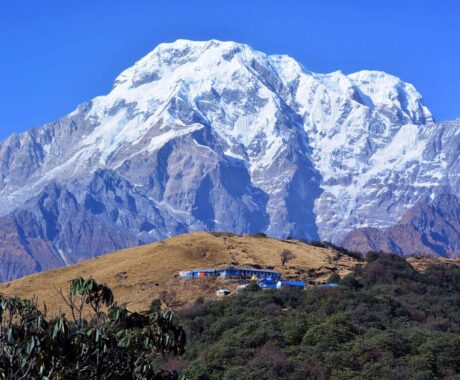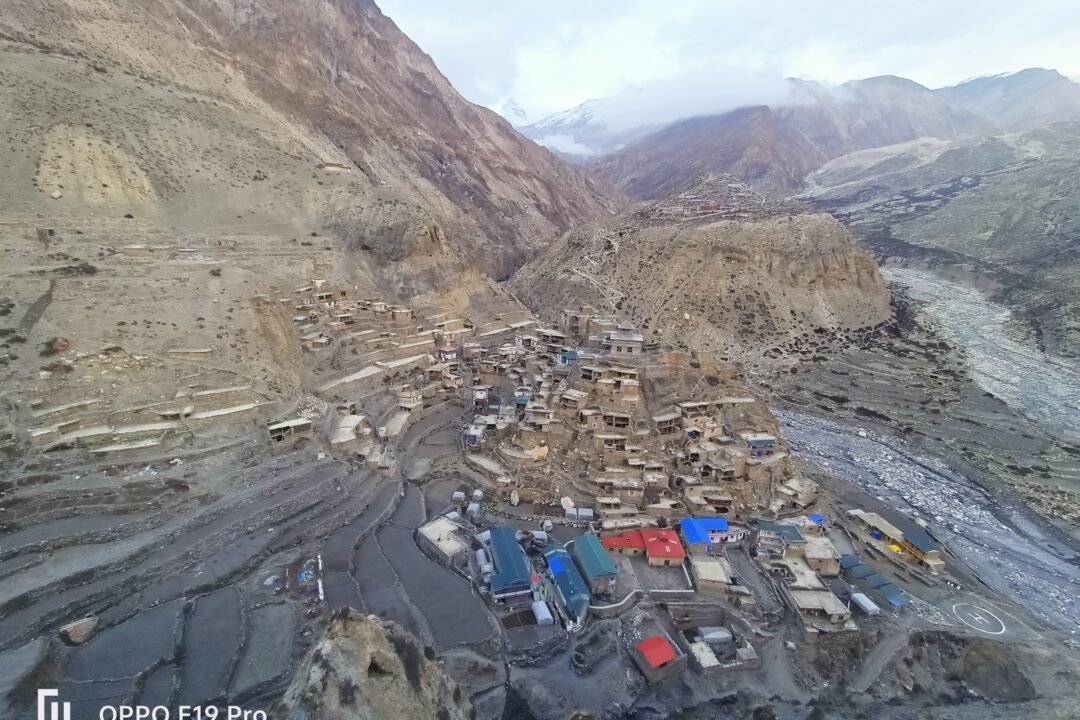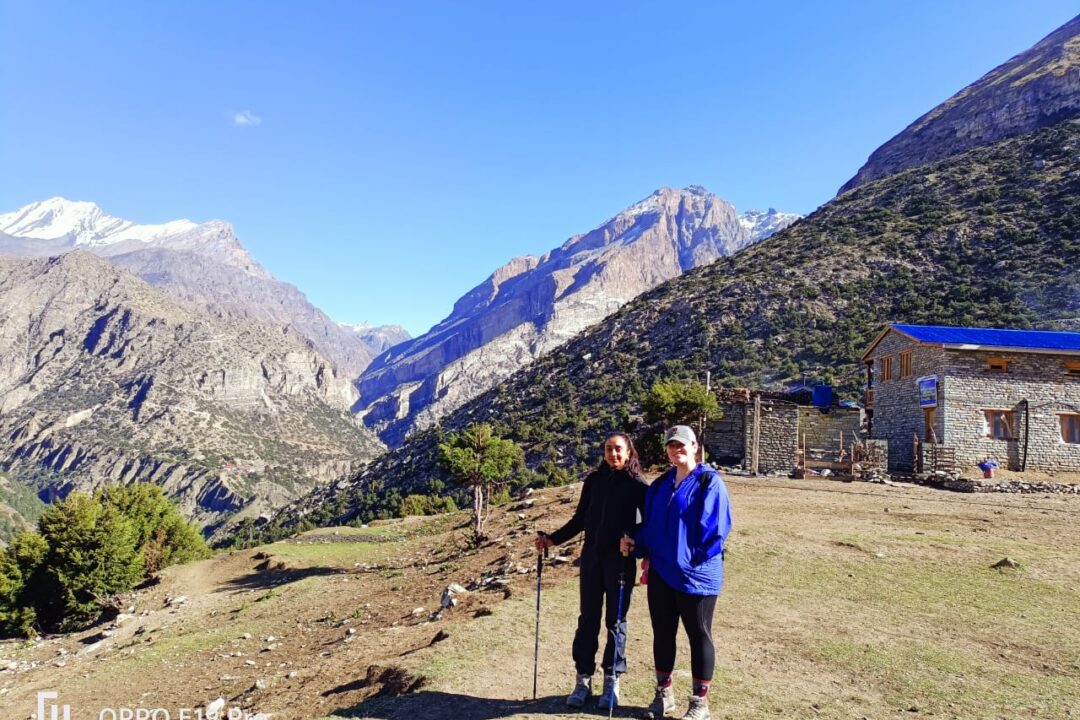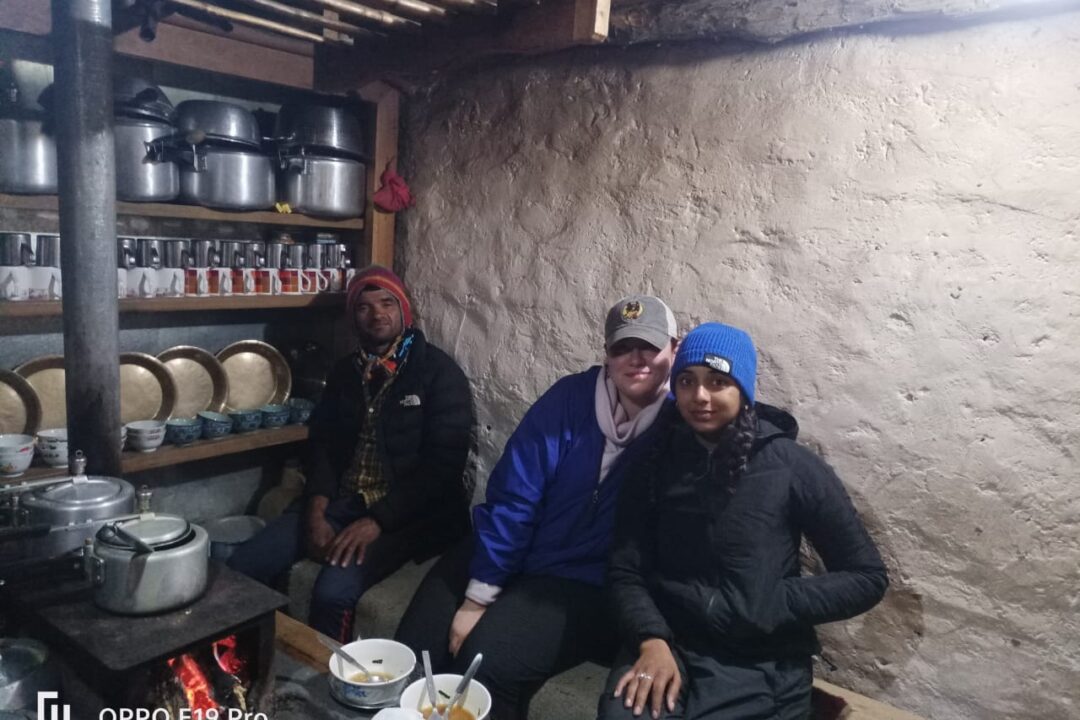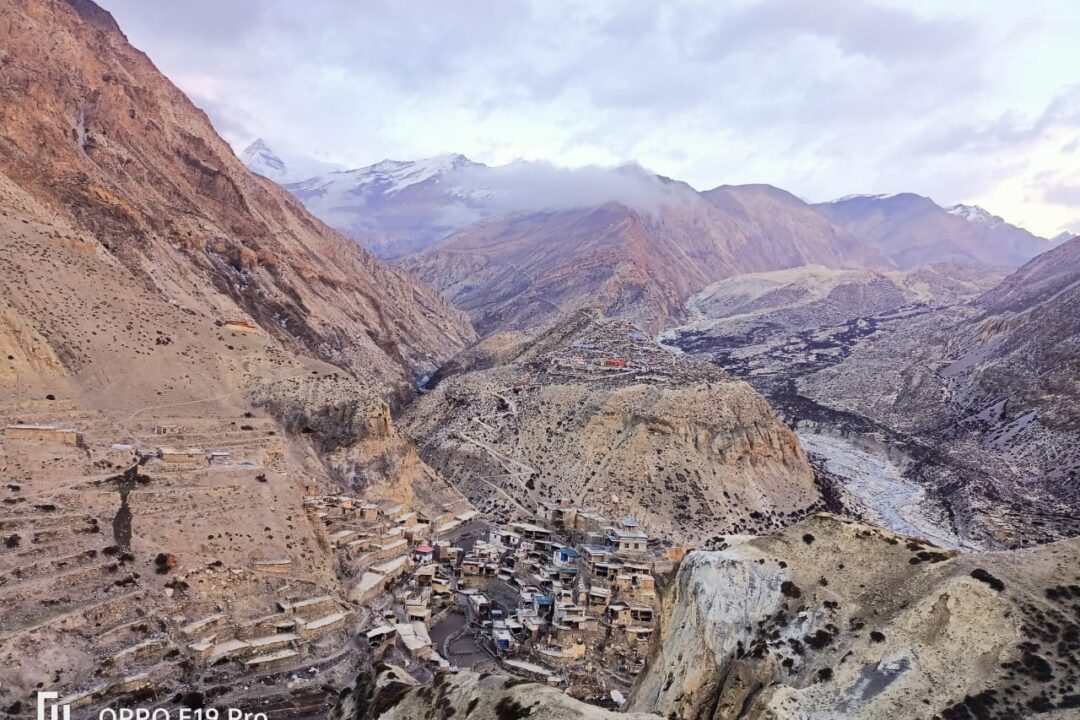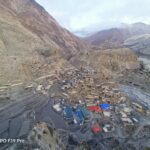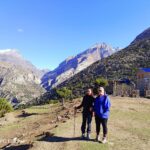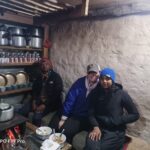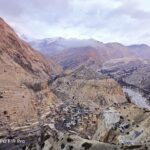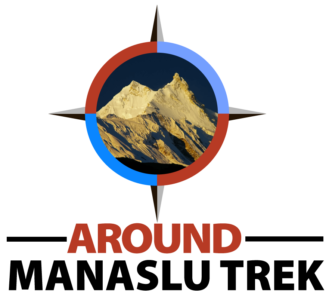Narphu Valley Trek
Trip Facts
- Destination Annapurna Region Nepal
- Activity Trekking
- Duration 14 Days
- Trip Difficulty moderate
- Max. Altitude 5316
- Best Time Sep to Dec & March to May
- Start and End Kathmandu - kathmandu
- Meals Breakfast / Lunch / Dinner
- Accommodation 3 star hotel in Kathmandu & Tea house
- Group Size 2 - 10
- Transportation Private Transport
Trip Highlights
- Jaw-dropping view of Annapurna range, Himlung Himal, Gangapurna, Tilicho Peak, and dozens of several other peaks
- Stay in ancient villages and explore Buddhist monasteries
- Experience the historic lifestyle of local inhabitants and culture and immerse yourself in that beautiful smile of kids.
- Relax in the hot springs at Tatopani
- Visit Tilicho Lake, which holds the record as the highest lake globally
- Observe yaks, goats, and sheep grazing on their pastures
- Enjoy the traditional Nepali food in the tea house with warm hospitality
- Visit cultural heritage sites dating back to the 5th century, such as the Tashi Lhakhang Gompa
- Explore ancient villages that preserve the mountain lifestyle from the 1900s
- Discover diverse Himalayan fauna and alpine flora, offering a complete natural experience
- Opt for a hike to Himlung Base Camp to experience a genuine base camp trek
- Exploring UNESCO World Heritage Sites
- Experiencing local delicacies like yak cheese and butter tea
- Connecting with welcoming locals and fellow trekkers from around the globe, creating lifelong friendships
-
Introduction
If you’re looking for a trek to avoid crowd trails in the Annapurna Region, then the Narphu Valley Trek is a good selection. This trek was opened up for trekkers in 2002 but became popular around 2010 when local homes began hosting tourists. Before that, camping was the only option.
The journey of the Nar Phu Valley takes you through villages like Meta, Nar, and Phu; each place has its own special charm, offering chances to take amazing photos and create lasting memories. The Nar Phu Valley Trek combines the beauty of nature with cultural exploration, featuring stunning peaks, glaciers, remote villages, lush forests, monasteries, and encounters with Tibetan cultures.
The main highlights of this trek are the breathtaking views of Annapurna, Dhaulagiri, Manaslu, Machhapuchhre, Lamjung Himal, Tilicho Peak, and more.
Various ethnic groups, like Gurung, Magar, Manangi, and Bhotes, have lived in this region for centuries. In the higher altitudes, people have mostly followed Tibetan Buddhism for centuries. Experiencing Tibetan culture at high altitudes is something you won’t find anywhere else. The warm hospitality of the local people, combined with their unique culture and religion, is something special that leaves a lasting impression.
During spring and autumn, the weather is brilliant, making them the best times for the Nar Phu Valley Trek. It starts from Koto in Manang and follows a circuit route through the high pass of Kang La (5,240m).
The locals have maintained the trail path well, making it safe to trek for the visitors. Even beginners with good stamina have successfully submitted to this trek. This trek is one of the shortest and easiest in the Annapurna region. Let’s know more about this trek so that it will help to book for the once-in-a-lifetime journey.
Best Season or Time for Nar Phu Valley Trekking
Nar Phu Valley Trek and similar other trekking destinations such as EBC, Annapurna Base Camp, and Langtang Valley Trek’s best time is during the spring and autumn seasons.
During the spring season, you can expect very little rainfall and temperatures favorable for trekkers. It is not extremely cold during these seasons, and long days help trekkers reach their destination before sunset. Also, the trekking path is filled with greenery, and occasional rhododendron decorations add to the beauty during this time. It is the peak season, so you can see thousands of trekkers heading toward the summit. Therefore, we recommend you book earlier so you won’t have to face the problem of finding accommodation.
Similarly, during autumn, the weather is perfect for trekkers; it is neither too hot nor too cold. A sunny day with a clear sky gives you a breathtaking view of the Himalayas. It’s the perfect time to soak up the beauty of this region without having trouble with the weather conditions. Imagine walking in the beautiful nature and seeing every detail of the mountains; it will give you the feel of a heavenly path. Trekking in the autumn is a magical time when nature shows its best color.
Not only in the autumn but also in the spring, the Nar Phu Valley Trek is possible. This trek can be done in the rainy season, too. When trekking during the rainy season, you need to be extra careful. Due to the heavy rainfall, there are high chances of landslides, trail paths becoming muddy, and leeches sprawling in the grass, which can give you trouble. You should wear and carry waterproof clothes and items to protect you from rain if you are traveling during this season.
Trekking in the winter will not be the best idea due to the cold, freezing weather of the upper Himalayan region. It can be harsh, and due to heavy snowfall, in case of an emergency, rescue operations are also not possible. Temperatures can drop in winter as low as 2°C at high altitudes during the day and past -12°C during the night.
Food or Meal on Nar Phu Valley Trek
On the Nar Phu Valley Trek, three meals are provided each day. For breakfast, the tea house offers Tibetan bread, chapati, toast, oats, muesli, and eggs (with various options available), which may be served with jam, honey, cheese, or curry.
Lunch and dinner are similar, featuring typical traditional Nepali foods such as Daal Bhaat with vegetables or meat, Thukpa (noodle soup), MoMo (dumplings), Sherpa stew, and a variety of Western and Chinese dishes like macaroni, pasta, spaghetti, pizza, and spring rolls. Other meal options can also be found on the menu.
For beverages, you can choose from milk tea, black tea, honey hot lemon, hot water, ginger hot water, or ginger tea. Additionally, be sure to try the traditional Sherpa tea.
Accommodation during the Nar Phu Valley Trek
Accommodation in Kathmandu: Depending on your budget, you can choose a hotel from basic to luxurious. You can find the hotel and lodge in each and every corner of the city. Also, if you like to spend your precious time in and relax in nature, you can choose a resort near Shivapuri National Park. The accommodation cost per day ranges from 10 to more than 100 dollars.
Accommodation in Tea House: On trekking, accommodations are simple yet comfortable; toilets need to be shared in some teahouses. Every tea house has one large communal dining area, and it’s a great spot to meet other trekkers. You can make friends, swap stories, and sip tea or coffee while you watch the sunset over the mountains. Some tea houses do have Wi-Fi, but you have to pay to use it. The electricity can also be disrupted during bad weather. Therefore, we recommend taking a power bank with you. The cost of the tea house is between $5 and $10 per day.
Note: You can get the single room on special requests, but you need to spend extra bucks.
Nar Phu Valley Trek Difficulty
During the Nar Phu Valley Trek, you will follow a well-built trail suitable for people with moderate trekking experience. Most of the trek is not too difficult, except for a small section after the Kangla Pass, which might be a bit challenging. It’s better if you have some trekking background, but overall, it’s quite manageable.
Compared to other famous treks like Everest Base Camp or Annapurna Base Camp, this one is shorter and easier. You’ll be walking around 6-7 hours each day, and even if you’re a beginner, you can handle it if you’re in good shape for walking in hilly areas. The local people take good care of the trail, so it’s safe to walk on.
The journey to the villages of Nar and Phu is incredibly beautiful. Plus, the day of acclimatization in Phu helps your body get used to the high altitude, making the whole journey suitable for every trekker.
Travel Insurance for Nar Phu Valley Trek
During this trek, you will pass through high-altitude areas such as Thorung La Pass (5,416 m) and Kang La Pass (5,320 m), which entail dangers. As you already know, when walking at such a high altitude, there is a high chance of getting sick.
Also, unpredictable weather conditions in the high area and unseen conditions like landslides, floods, avalanches, etc. can occur. Therefore, travel insurance is compulsory, and we recommend having insurance done before you begin your trek for your safety.
Altitude Sickness and Remedies during Nar Phu Valley Trek
During the Narphu Valley Trek, you will reach an altitude of above 3000 meters. Altitude sickness can occur to anyone when they’re really high in the mountains. It usually improves after a few days if you rest, but in some cases, it can be serious and require medical attention. Getting altitude sickness chances are high if you’re in a place usually more than 2,500 meters.
The main symptoms of altitude sickness
- A headache
- Loss of appetite, feeling or being sick, feeling tired or exhausted
- Dizziness
- Difficulty sleeping
Things to do to prevent altitude sickness
- Climb or travel to high places slowly so your body can get used to having less oxygen.
- Spend a few days at a lower altitude before going higher.
- If you’re above 3,000 meters, have a break day every 3 to 4 days.
- Drink enough water to avoid dehydration.
- If you’ve had altitude sickness before or are going to a high place quickly, talk to a doctor. They might give you medicine to prevent altitude sickness.
Things that you shouldn’t do
- Don’t go from below 1,200 meters to over 3,500 meters in one day.
- If you can’t avoid flying directly to a high place, rest for a day before going higher.
- Don’t sleep more than 500 meters higher than the night before, especially above 3,000 meters.
- Don’t drink alcohol while traveling or climbing.
Festivals and Cultural Practices in Nar Phu
The main inhabitants of the Nar Phu Valley are Gurungs, Tibetans, and Manangis. These communities have unique customs, practices, and beliefs that will truly amaze you. At the lower altitudes, the dominant religion is mainly Gurung, whereas at the higher altitudes, you will find Tibetan religion. There are numerous Buddhist temples and monuments, such as Tashi Lhakhang and Nar Phedi, where you can immerse yourself in the culture and gain a better understanding during the trek.
As a visitor, it is your responsibility to respect the local culture and customs and to interact with the people respectfully. The cultural practices in Nar Phu are different from those in the Kathmandu Valley. Lhosar is the main festival in this region, marking the Tibetan New Year, which falls in February or March. Another vibrant festival is Yartung, which features masculine arts depicting their ancient culture and its significance. Horse racing and archery competitions are enjoyable parts of this festival. Attend these festivals if you visit during the festival months and be sure to explore the ancient Buddhist monasteries as well.
Outline Itinerary
Day 01: Arrival in Kathmandu, pickup to hotel – 1,300m
Day 02: Day sightseeing Kathmandu 1,300m
Day 03: Drive from Kathmandu to chameche 1,400m – 09 hrs
Day 04: Trek to Dharapani 2,000m – 06 hrs
Day 05: Trek to koto 2,570m – 06 hrs
Day 06: Trek to meta 3,500m – 09 hrs
Day 07: Trek to Trek to khayang 3,700m – 05 hrs
Day 08: Trek to Phugaou 4,000m – 04 hrs
Day 09: Rest day Phugaou – 4,000m
Day 10: Trek to NarPhadi 3,500m – 06 hrs
Day 11: Trek to Nargaou 4,350m – 04 hrs
Day 12: Trek to Nagwal 3,750m vai Kanga la pass 5,353m – 09 hrs
Day 13: Drive from Nawal to Besisahar /Kathmandu – 1,300m
Day 14: Departure from Kathmandu airport – 1,300m
Alternative Treks Around Nar Phu Valley Trek
The Nar Phu Valley Trek is a remote and culturally rich trek in the Annapurna region, taking you through the hidden valleys of Nar and Phu, ancient Tibetan-influenced villages, and high-altitude landscapes. For those looking for alternative treks with similar experiences but varying challenges, here are some great options:
- Annapurna Circuit Trek – 16 Days: Experience diverse landscapes, ancient villages, and the iconic Thorong La Pass. A classic trek with a mix of everything, from high-altitude challenges to cultural immersion.
- Annapurna Three High Passes trek – 29 Days: For seasoned trekkers, this trek takes you over three high passes, offering stunning views and a real test of endurance. Perfect for those seeking an adventurous challenge.
- Annapurna Base Camp Trek – 14 Days: A shorter trek that still provides incredible mountain views, diverse terrain, and cultural encounters, taking you straight to the base of the majestic Annapurna.
Detailed Itinerary
-
Day 01: Arrival in Kathmandu, pickup to hotel - 1,300m
Airport pickup to the hotel
Altitude: 1300mMeals: BreakfastAccommodation: 5 star hotel in Kathmandu -
Day 02: Day sightseeing Kathmandu - 1,300m
Trek perpesation day sightseeing Kathmandu Darbar Squer, Patan, Bhakatapura, and Buddha Stupa
Altitude: 1300mMeals: Breakfast / lunch / DinnerAccommodation: 5 star hotel in Kathmandu -
Day 03: Drive from Kathmandu to Chameche 1,400m - 08 hrs
Drive from Kathmandu to Beshishar and Chamche around 9 hr/When we start driving, we pass kathmandu We can see Ganesh Himal and Manasalu ranges on the ways views /fallow 2 Rivers Trishuli and Marshandai
Altitude: 1300mMeals: Breakfast / lunch / DinnerAccommodation: Tea house -
Day 04: Trek to Dharapani 2000m - 06 hrs
Trek from Chamche to Dharpani on the way to Tal. We trek for 5–6 hours, enjoying beautiful mountain views, valleys, rivers, domes, and wild animals.
Altitude: 2000mMeals: Breakfast / lunch / DinnerAccommodation: Tea house -
Day 05: Trek to koto 2,570m - 07 hrs
Altitude: 2570mMeals: Breakfast / lunch / DinnerAccommodation: Tea house -
Day 06: Trek to Meta 3,500m - 09 hrs
This is a wild trekking area we cannot see many villages on the way, but we can see rivers and forests on the way. Some time, widls and domestric animals take ytrek 9 hours.
Altitude: 3500mMeals: Breakfast / lunch / DinnerAccommodation: Tea house -
Day 07: Trek to Trek to khayang 3,700m - 05 hrs
Trek to Khyang (4 hours) nice mountain valley and hills
Altitude: 3700mMeals: Breakfast / lunch / DinnerAccommodation: Tea house -
Day 08: Trek to Phugaou 4,000m - 04 hrs
Trek to Phu Gaou for 4 hours working in this village called Himlung Base Camp.
Altitude: 4000mMeals: Breakfast / lunch / DinnerAccommodation: Tea house -
Day 09: Rest day Phugaou - 4,000m
Rest day, we can visit local village/coulture/gumpa/Himlung himal base camp
Altitude: 4000mMeals: Breakfast / lunch / DinnerAccommodation: Tea house -
Day 10: Trek to NarPhedi 3,500m - 06 hrs
Trek to Nar Phadi takes 4 hours, and we stay in gumpa.
Altitude: 3500mMeals: Breakfast / lunch / DinnerAccommodation: Tea house -
Day 11: Trek to Nargaou 4,350m - 05 hrs
This is the border of Manang and Mustang, we can pass Kangha La / Tirila Pass to the upper Mustang.
Altitude: 4350mMeals: Breakfast / lunch / DinnerAccommodation: Tea house -
Day 12: Trek to Nagwal 3,650m - 09 hrs
Trek to Nagwal via Kangala Pass (5316 m)
Altitude: 3600mMeals: Breakfast / lunch / DinnerAccommodation: Tea house -
Day 13: Drive from Nawal to Besishar / Kathmandu 1,300m - 09 hrs
We drive back from Nagwal to Besishar and Kathmandu for 12 hours by private jeep.
Altitude: 1300mMeals: BreakfastAccommodation: 5 star hotel in Kathmandu -
Day 14: Departure from Kathmandu airport - 1,300m
Altitude: 1300mMeals: Breakfast
What's included
- Airport pick up and drop
- 3 Star Hotel accommodation in Kathmandu & Pokhara 3 Night (with breakfast included)
- An Experience English speaking guide and porter (1 porter for every 2 trekkers)
- All Meals and Teahouse accommodation during the trek
- Kathmandu Valley Sightseeing with private jeep and tour guide (Local Monuments entrance fee included)
- Kathmandu to Pokhara Flight (Round Trip)
- All required trekking permits (Annapurna Conservation Area Entry Fee and TIMS Card)
- Guide and porter insurance with food and accommodation
- Basic Medical kits
- Sleeping and duffel bag, down jacket, trekking poles (should be returned after the trek)
- Farewell diner
- Emergency Helicopter Evacuation Service Arrangement Only (should cover by your travel insurance)
- All required paper works and government taxes
- RP Adventures T-shirt
What's not included
- International Flight
- Nepal Travel Visa Fee
- Personal Medical and Travel insurance (Should cover helicopter evacuation)
- Guide, Porter and Driver tips
- Personal Gears (equipment)
- Personal bill
- Lunch and Dinner in Kathmandu
- All other personal expense of beverages (hard and soft drinks)
- All other things not mentioned in the inclusion
Trekking Gears
The Annapurna Region is one of the most popular trekking destinations in Nepal, attracting thousands of trekkers every year. It is renowned for its stunning landscapes, diverse culture, and breathtaking views of the Annapurna mountain range, including Annapurna I, the 10th highest peak in the world.
Trekking in the Annapurna Region offers a variety of routes catering to different preferences and fitness levels. Some of the popular trekking routes in the Annapurna Region include: Annapurna Circuit Trek, Annapurna Base Camp (ABC) Trek, Ghorepani Poon Hill Trek, and Mardi Himal Trek.
To ensure a safe and comfortable trek in the Himalayan region, it is highly recommended to bring the appropriate equipment and gear to cope with the cold temperatures. The following is a list of essential equipment and gear for Nar Phu Valley Trek, which can be purchased either in the Thamel market or brought from your home country:
The following basic checklist for trekking and hiking equipment should assist you in packing for our trips. Keep in mind the importance of minimizing the weight of your clothing and gear. Your packed trek bag should weigh less than 15 kilograms. Remember, this is merely a guideline and not everything listed is essential to bring.
- Lightweight thermal gloves
- Hiking boots
- 2 pairs of thin and 2 pair of thick woolen socks.
- Trekking trousers
- Waterproof (trousers / jacket)
- Base layer shirts
- Underwear (4)
- Sun hat or scarf
- Thin, lightweight (inner socks) (4)
- Head lamp ,spare bulbs, & batteries
- Small padlock to lock trek bag
- Plastic bags - for keeping items dry inside trek bag
- Small wash towel
- Basic First Aid Kit
- Sun protection (including total bloc for lips)
- Trekking poles
- Down jacket
- Water bottle 1 liters
- Hand wash
- Snow glasses and sunglasses
- Duffle bag or kit bag to carry to gear while trekking.
Additional Equipment Checklist
- Headband or Beanie
- Swiss army knife
- Lip guard
- Sun lotion
- Scarf or neck Band
- Rain jacket/ Umbrella
Map
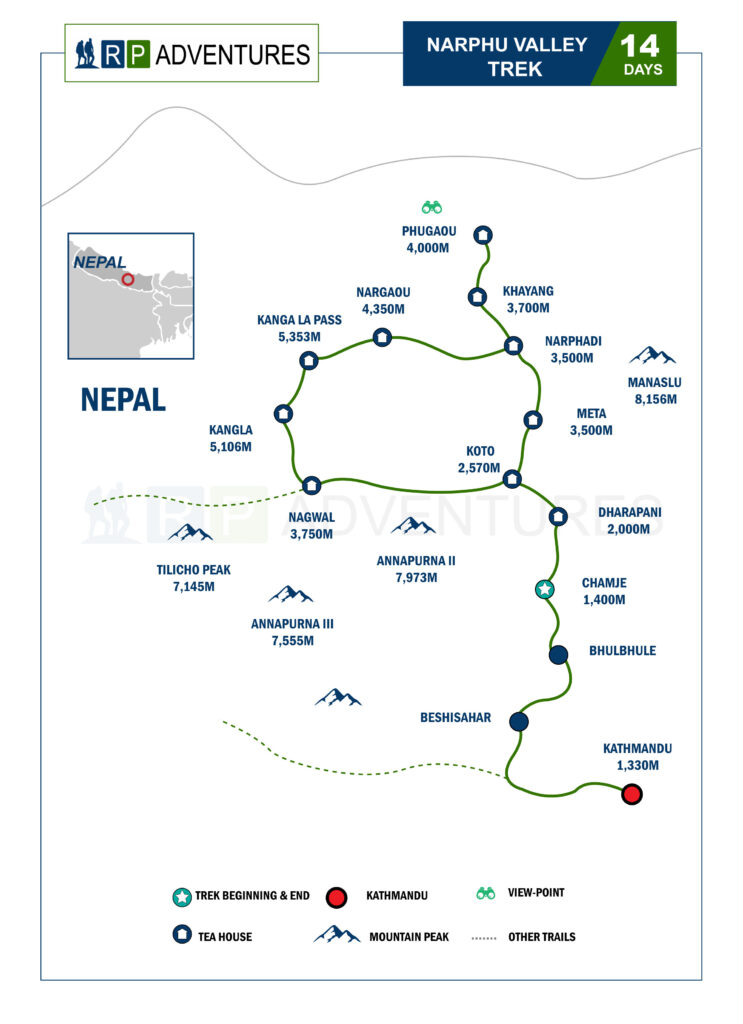
FAQs of Narphu Valley Trek
-
Where is Nar Phu Valley?
The Nar Phu Valley trek is located within the Annapurna Conservation Area in the northwest of Nepal. The Nar Phu Valley is in the rain shadow of the Annapurna and Himlung Peaks, so this trek takes you to the off-beaten path. -
Can I Do Nar Phu Trek Without a Guide?
This trek lies in a restricted area, so you must get the permit before you start your trek. Therefore, a minimum of two trekkers is required to get the permit, or you can get the permit by joining another group. Also, you need to hire a professional registered license holder guide for this trek. -
Is Nar Phu Valley Trekking Worth Doing in Nepal?
Definitely, Yes. It's a great choice as this trek will allow you to see one of the most remote parts of Nepal with ultimate serenity, magnificent mountain views, and pure natural beauty. -
Can I Charge My Electronic Devices While Exploring the Nar Phu Valley?
Similar to the other trekking destinations in Nepal, Nar Phu Valley also has a tea house on the trail where you can charge your electronic device. But you need to pay extra for the charging facility, and the price differs in the tea house depending upon the altitude. -
Is Credit or Debit Card Accepted Along The Nar Phu Valley Trekking Route?
Being in a remote area, this trek has few atm machines on the trail. Therefore we recommend you to carry the cash with you before you begin your trek. -
Is There Internet Available During The Nar Phu Valley Trek?
There is no wifi facility at the high altitude area, but most of the trekkers have the option to use the local sim for the internet facility. -
Is this trek possible with children?
There are no age restrictions for the Nar Phu Valley Trek, but due to moderate difficulty level, tagging the children may escalate the difficulty. As long as you're physically fit, you can begin this trek. -
Do children need to have separate permits in Nepal?
If your children are under the age of 10, then the government of Nepal waived the fee. You must carry the legal document to verify that your child is below 10 years old. -
Do I need any permits for this trek?
The Government of Nepal has declared different areas as restricted and conservative areas where you require permits. Among them, Nar Phu Valley also belongs to a restricted area. So, for this trek, you will also require two permits: a Special Restricted Area Permit (RAP) and an Annapurna Conservation Area Project (ACAP). -
When is the best time to travel there?
Nar Phu Valley Trek and similar other trekking destinations' best time is during the month of spring and autumn seasons.
What Our Travellers' Say about Narphu Valley Trek

Stunning beauty of the remote Nar Phu Valley
I can very much recommend the Nar Phu Valley / Kang La Pass trek. It is located in a very remote part of the country close to the Tibetan border, only accessible by foot. It has lots of beautiful scenery to offer, you walk through majestic mountain ranges, high above deep river canyons (you should be easy on heights), see beautiful secluded monasteries and traditional stone house villages.
My guide Rajan was really kind, helpful, and knowledgeable telling me a lot about the region and the people living there and was also very sensitive to the needs of people. You stay at basic but very nice guesthouses, sitting around the fireplace for dinner mostly with the locals which are very welcoming and warm-hearted people. Even if you don‘t speak the same language you find ways to connect.
Christina
Germany 2023-01-17Trip You May Like
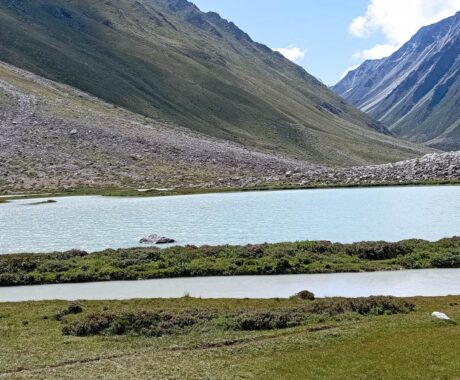
Limi Valley Trek
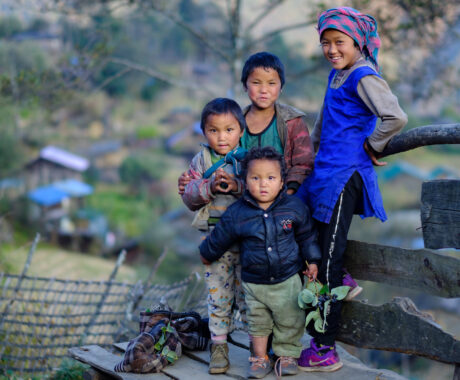
Kanchenjunga North Base Camp And Lumba Sumba

Tsum Valley & Manaslu Circuit Trek
